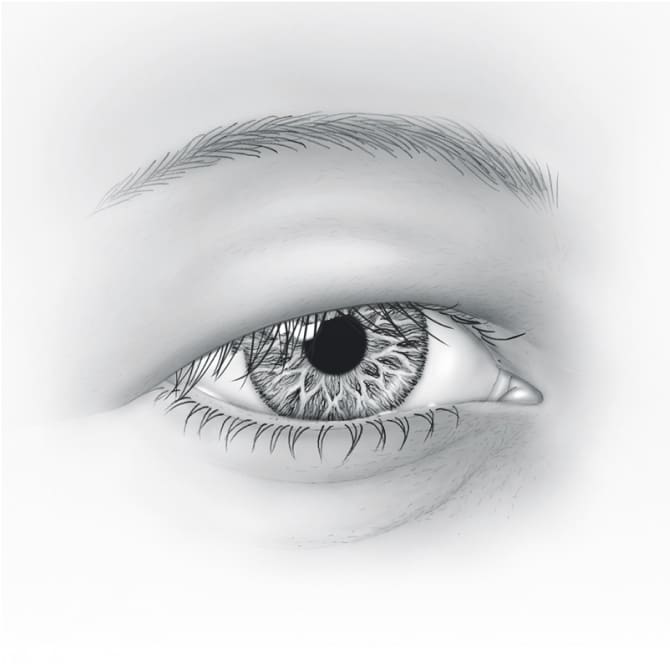Excess Eyelid Skin and Droopy Brows
Your eyelids
Eyes are the first things that people notice about us, and are an important aspect of our overall appearance. In youth eyelid skin is elastic and smooth, but it thins over time. With loss of elasticity, we begin to see fat that bulges forward. With loss of volume and soft tissue weakness, eyebrows can fall (called droopy brows). Age, heredity and sun exposure all contribute to this process. Excess skin and loss of volume in the eyelid area can detract from a healthy appearance. Excess skin hanging over the eyelid area and drooping of the brows can cause obstruction of vision. Blepharoplasty and brow lift surgery can provide a more youthful appearance and functional improvement.

Eyelid Lift (Blepharoplasty)
Blepharoplasty is a surgery to remove excess skin on the upper or lower eyelid area. If the excess skin obstructs vision, blepharoplasty may improve the visual field obstruction and provide a more youthful and alert appearance.
Excess skin and sometimes fat are removed from the upper eyelid through an incision hidden in the natural eyelid crease. If there are other issues that affect the outcome of surgery like dry eye, thyroid eye disease, or laxity, these may be addressed prior to blepharoplasty.
Fat in the lower lid can be removed or repositioned through an incision hidden on the inside of the lower eyelid (transconjunctival blepharoplasty). Skin pinch, laser resurfacing, or a chemical peel can be performed at the same time if desired, to smooth and tighten the lower eyelid skin.
Brow Lift
When droopy eyebrows are present, a procedure to elevate the brows may be appropriate, in addition to upper eyelid blepharoplasty.
Correction of mild to moderate brow ptosis may be accomplished through the same incision as an upper eyelid blepharplasty, or with injections into the brow area using an hyaluronic acid product, as there is always some loss of brow volume. When the droopy eyelids are more severe, surgery directly above the brow, in the forehead creases, or at the hairline can be performed.
For more significant amounts of droopy brows, or to address deep frown lines or lateral hooding of the upper lids, it may be necessary to raise the brows and forehead through incisions behind the hairline. The endoscopic brow lift is performed through small incisions hidden behind the hairline, using an endoscope and special instruments. The muscles that pull the brow down and crease the forehead skin are relaxed, allowing the brow to be raised into a more youthful position.
After surgery
Cold compresses are applied to reduce swelling and bruising. Antibiotic ointment or drops may be prescribed. Strenuous activity should be minimized for several days. Warm compresses may be recommended after several days to increase blood flow to the area and promote healing. Patients are asked to keep their head elevated.
Discomfort is generally mild. Non-aspirin pain relievers are usually all that is necessary post-operatively. Aspirin products, non-steroidal anti-inflammatory medications like ibuprofen, and other blood thinners should be avoided before and after surgery as they may increase the risk of bruising and bleeding. Most patients are able to return to regular activities within several days.
Risks and Complications
Bleeding and infection, which are potential risks with any surgical procedure, are very uncommon. Be sure to tell your surgeon if you are on blood thinners as their use may put you at increased risk for bleeding complications. Most of these procedures can be performed under mild sedation or under local anesthesia.
Your surgeon cannot control all the variables that may impact your final result. The goal is always to improve a patient’s condition but no guarantees or promises can be made for a successful outcome in any surgical procedure. There is always a chance you will not be satisfied with your results and/or that you will need additional treatment. As with any medical decision, there may be other inherent risks or alternatives that should be discussed with your surgeon.